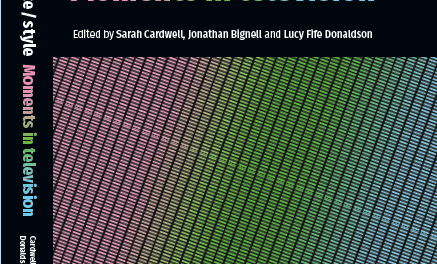Fifty years ago this weekend, BBC2 began, with a technological fiasco. Everything that could go wrong, did, from power supply to headline reading. These were the days when signals were routinely interrupted, aerials regularly required agile tweaking, and repairmen stood ready to come to your home.

Like many people my age, but perhaps few readers of this column, I can actually remember when television arrived: not in my home, but to the very town where we lived. When my parents left the UK for Australia, they moved to the latter’s laughable capital, which had no stoplights and no TV. Television had first appeared in real Australian cities, six years earlier. It was a big deal:
In September 1956 many Sydney residents had their first opportunity to experience first-hand contact with the new mechanical “monster”—TV—that had for the last seven or eight years been dominating the lounges of English and American homes. Speculation on its effects had run high. On the one hand it was claimed:it would eventually destroy the human race since young couples would prefer viewing to good honest courting; children would arrive at school and either go to sleep or disgorge half-baked concepts about the Wild West and the “gals” who inspired or confused the upholders of law; it would breed a generation of youngsters with curved spines, defective eyesight, American vocabulary but no initiative; it would result in a fragmentation of life whereby contact among, and even within, families would be reduced to the barest minimum. On the other hand, supporters claimed that it would initiate a moral regeneration of the nation by enticing straying husbands home to see “Wagon Train” and “The Perry Como Show”; it would encourage dead-end kids to explore the richness of books and of life in general; and it would unite the family by offering common goals and common interests (Campbell assisted by Keogh 1962: 9)
Television and the Australian Adolescent (the 1962 source of this sensational quotation) finds its authors worried about the ‘habits of passivity’ that television might induce and the power of particular genres to ‘instill certain emotions, attitudes and values.’ The upshot of all this, they feared, might be ‘a generation of people who are content to be fed by others’ (Campbell assisted by Keogh 1962: 23).
Describes me rather well.
The authors were decades behind European and Yanqui anxieties and hopes. In a 1930 edition of the Daily Worker, Samuel Brody argued that television in the US would seek to pacify audiences through ‘the same authentic lies’ as cinema. Conversely, the Soviet Union would deploy television to ‘build socialism and a better world for the laboring masses’.
In the Hollywood movie Murder By Television (Clifford Sanforth, 1935), big media companies covet the new technology, but are confounded by its inventor, Professor Houghland, who wishes to protect TV from corporate despoliation. Houghland refuses to obtain a patent, because he wants to protect television from conventional notions of property and make it ‘something more than another form of entertainment.’ He puts on a grand demonstration, joining people across the US, then takes us live to Paris, London, and an unnamed Asian city as part of a grand design to ‘make of this earth a paradise we’ve all envisioned but have never seen.’
Just at his moment of triumph, when TV seems set to assure ‘the preservation of humanity’ and ‘make of this earth a paradise,’ Houghland is killed on-screen. A doctor secretly involved with ‘foreign governments’ (a cable to him in code is signed ‘J. V. S.’—Soviet dictator Joseph Stalin’s initials) uses an office telephone to radiate waves that merge with great spirals emanating from the television set to form an ‘interstellar frequency, which is a death ray.’
The message is clear: Houghland’s invention incorporates the best and the worst of human thought and guile, and the mystery of modern life; his public-broadcasting, not-for-profit model cannot be cordoned off from capitalism; and his invention can enter the minds of spectators to control their thoughts and harm them.
When we moved back to Europe and the US, I encountered the less fatal attraction of color sets, and our serial returns to Australia always felt like unwelcome reencounters with a backward, monochromatic past that had been transcended elsewhere.
Color sets finally appeared in Australia in 1975. My parents didn’t buy us one, just as they eschewed a dishwasher or microwave. Such items were considered too costly, without that being explained in monetary terms. I sensed that they were deemed decadent in some way, though that would have been an achievement in sickeningly smoke-laden suburban rooms where whiskey, wine, and beer spilled all day and contempt was voiced for drug addicts and alcoholics. Just as well I was so influenced by TV…
Toby Miller is 20% a Professor of Journalism, Media and Cultural Studies at Cardiff University/Prifysgol Caerdydd and 40% the Sir Walter Murdoch Professor of Cultural Policy Studies at Murdoch University. He can be contacted at tobym69@icloud.com and his adventures scrutinized at www.tobymiller.org.





